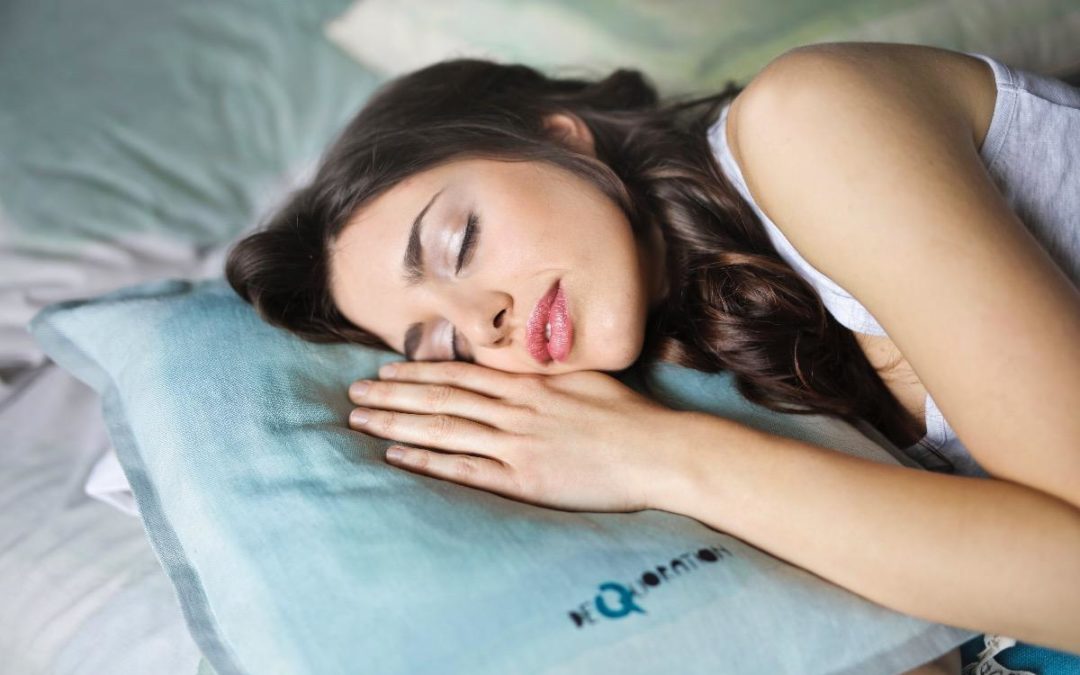Do you wish you could sleep like you used to? Do you know you aren’t getting enough sleep, but haven’t done anything about it? Sleep problems are some of the most frustrating symptoms of anxiety and depression. There are things you can do to help yourself sleep better. The habits we fall into slowly over time are setting us up for sleep deprivation.
I’m always surprised when someone tells me they sleep well.
In fact, I’m envious. Somewhere after my 20’s, perfect sleep began to elude me. I’ve been searching for the solution and I’ve gathered a list of strategies to get better sleep. Not perfect sleep. Better. Try some of these if you need better sleep too.
– Create a bedtime ritual to encourage your mind and body to slow down and get sleepy.
– Evaluate your bedroom. The best bedrooms for sleep are dark, cool, quiet and free of clutter. Make the changes that are realistic for your life and budget. Negotiate with your partner and pets to get more serenity in the space you share.
– Turn off unnecessary lights in your home a few hours before bedtime and keep other lights low. Your body responds to light with wakefulness.
– Limit caffeine and other stimulants. Use caffeine only within 4 hours of waking. If you are a night sleeper, for example, you may need to avoid caffeine after 12:00 noon. If you’re a day sleeper adjust for your sleep/wake schedule. Don’t forget all the products that include caffeine, especially chocolate, coffee, tea, soda, and energy drinks.
– Avoid alcohol several hours before bedtime. Alcohol may help you fall asleep, but it decreases sleep quality and often causes you to wake up within a few hours and struggle to fall asleep again. If you drink alcohol, experiment with this. You may find the you sleep better when you don’t drink any alcohol at all. One drink may not interfere with your sleep, but more usually does. Find out what works for you.
– Limit screen time. TVs, computers, iPads, phones, video games and other screens emit blue light which suppresses melatonin, the hormone that promotes sleep. Try turning off electronics 1 or 2 hours before you want to sleep. Experiment to see how much time your brain needs to wind down from screen time. Try some evenings that are free from screens after dinner.
– Create a consistent sleep schedule. Get up at the same time each day and go to bed at the same time each night, even on weekends.
– Go to bed when you are sleepy. This may seem to conflict with the tip above. You may need to start with getting up a bit earlier, to promote earlier sleepiness.
– Avoid naps when you are trying to reset your sleep pattern. This may not apply to you if you have young children at home who wake up at night or if you are on a nighttime work schedule which routinely causes sleep deprivation.
– Meditate. It helps your mind be calmer sooner so that your stress level does not continue to rise. If you ignore that feeling of rushing and pushing to check off the next goal, you may find yourself with a level of wakefulness at bedtime that is difficult to turn off. Meditation helps keep this from going unchecked.
– Exercise early in the day.
Do you fall asleep, but can’t stay asleep?
If you fall asleep easily at first but then wake up afterworld, you are not alone. Many sleep experts says its normal to wake up between 2 and 4 a.m. Falling asleep again can be difficult, but you can train yourself to get better at it. Try a few of these tips tonight to see if they make a difference for you.
7 easy tips to go back to sleep!
1. Don’t look at the time when you wake up. Turn your clock to the wall. Resist the temptation to pick up your phone.
2. Stay in the dark. Don’t turn on the TV or computer. You want to signal your brain that it is not time to wake up. If you need to get up to use the bathroom, as most of us do, walk carefully with just a little light.
3. Gently tell yourself that you are going back to sleep. It’s not time to wake up.
4. Rub the top of your ears. This causes sleepiness.
5. Rolling your eyes upward with eyes open or closed signals sleep to your brain.
6. Don’t toss and turn. Use progressive muscle relaxation instead. Tense muscles and then release. Start with your feet and work your way up to your face. Usually you will be asleep before you finish.
7. If you lay awake longer than 20 minutes, get out of bed and sit. Consider writing your worries down. Get back in bed when you begin to feel sleepy.
Try any or all of these for a few weeks. Use what works for you.
